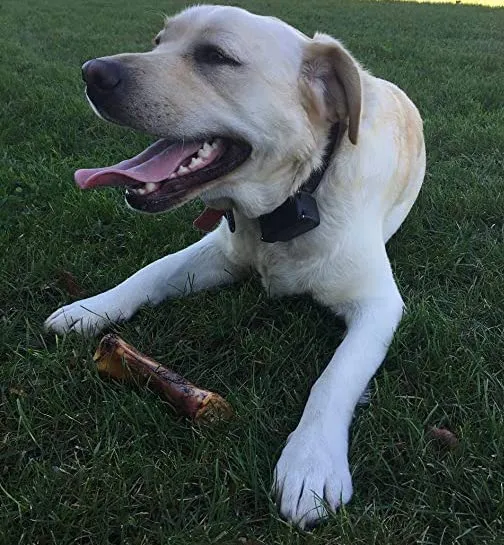For any dog owner, especially those with enthusiastic chewers, finding the right long-lasting dog bones is a quest. It’s not just about providing a fun diversion; it’s crucial for your dog’s mental stimulation, physical health, and dental hygiene. Aggressive chewers, by their very nature, can decimate typical treats in minutes, turning a supposed long-lasting bone into a fleeting snack and potentially a choking hazard. This is where understanding what to look for in a dog bone becomes paramount. As passionate dog parents, we want to ensure our canine companions have safe, engaging, and durable chewing experiences.
If you’re struggling to find a chew that truly lasts, you’re in the right place. This guide will delve into the essential factors to consider when selecting long-lasting dog bones specifically for aggressive chewers, ensuring your pup gets the most out of their chewing time.
Why Choosing the Right Long-Lasting Dog Bones Matters for Aggressive Chewers
Aggressive chewers, whether they’re large breeds like Bruno the Lab mix or determined smaller dogs, require special consideration. A bone that’s too hard can lead to fractured teeth, a common and costly veterinary issue. Conversely, a bone that breaks apart too easily poses a significant choking risk if ingested in large pieces. The goal is to find a perfect equilibrium: a chew that is robust enough to withstand intense gnawing but also safe enough not to cause harm.
Beyond durability, chewing is a fundamental canine behavior that fulfills several needs. It’s a natural stress reliever, helps to keep teeth clean by scraping away plaque, and provides essential mental enrichment. A bone that lasts a good while keeps your dog occupied and content, preventing boredom-related destructive behaviors. Therefore, selecting long-lasting dog bones isn’t just about a treat; it’s about supporting your dog’s overall well-being.
What to Look for in Long-Lasting Dog Bones for Aggressive Chewers
When embarking on the search for the ideal long-lasting dog bone, several key aspects should be evaluated to ensure safety, satisfaction, and durability.
1. Your Dog’s Chewing Style and Preferences
Understanding your dog’s individual chewing habits is the first step. While Bruno, a typical aggressive chewer, needs something incredibly robust, other dogs might prefer a slightly softer chew that still requires effort. Avoid toys that are too soft, like some rubber toys, as they can be destroyed and ingested quickly. On the other hand, excessively hard bones can be detrimental. Finding that “sweet spot” is crucial. For instance, while trachea chews can be a good option for some aggressive chewers due to their cartilage composition, they might not satisfy the most powerful jaws.
 A dog enthusiastically chewing on a large bone
A dog enthusiastically chewing on a large bone
For dogs like Bruno, a substantial marrow bone often proves to be the most satisfying and durable option. Sourcing these from reputable suppliers, especially those offering all-natural bones from grass-fed animals, can provide peace of mind regarding quality and origin.
2. The Importance of Bone Size
One of the most critical safety considerations is the size of the bone. A bone should never be small enough for your dog to swallow whole or for it to become lodged in their throat. For larger breeds, always opt for bones that are substantial enough that they can comfortably hold and chew without the risk of ingestion. This ensures a safe and prolonged chewing experience. For owners of smaller dogs or puppies, consider options specifically designed for their size, such as best chew toys for heavy chewing puppies.
3. Material and Type of Long-Lasting Dog Bones
The material of the bone is a significant indicator of its longevity and safety.
- Beef Bones: Generally considered one of the best options. Look for bones from cattle processed at a younger age (under 29 months). This typically results in a denser, more durable bone.
- Cooking Process: The way a bone is prepared matters immensely. Bones subjected to high heat or prolonged cooking can become brittle and more prone to splintering. Slow, low-heat cooking processes tend to preserve the bone’s integrity, enhancing durability, nutritional value, and flavor.
- Avoid: “Dinner bones” or bones that have been overcooked are generally not suitable for aggressive chewers. While they might seem like a natural treat, their compromised structure makes them unsafe.
4. Examining the Ingredients
Always read the labels. If an ingredient list contains items you don’t recognize, it’s a red flag. Many commercially available dog treats are loaded with artificial preservatives, fillers, and even sugar, which offer no nutritional benefit and can be harmful. The best long-lasting dog bones for aggressive chewers are typically single-ingredient products. Grass-fed beef bones are an excellent choice, as they are natural and free from unwanted additives. Be wary of terms like “all-natural” which can sometimes be misleading and may still include genetically modified ingredients or cane sugar.
You might also be interested in exploring other types of durable chews. For instance, while rawhide is a popular option, it’s essential to understand what’s in rawhide bones as its processing can be complex and sometimes involve chemicals.
5. The Source of the Bone
The origin of the bone is crucial for both quality and ethical reasons. Opting for bones sourced from grass-fed or free-range animals ensures a higher nutritional profile, including more omega-3 fatty acids and less saturated fat. Many owners prefer bones produced in the USA, as pet food regulations there can offer a greater sense of security. Knowing that your dog’s treat comes from humane farming practices also adds to the overall value. For larger dogs, best chew toys for big dogs might offer a starting point to find suitable options.
Top Picks for Long-Lasting Dog Bones for Aggressive Chewers
After extensive testing and consideration, certain brands and types of bones stand out for their durability and appeal to aggressive chewers.
K9 Connoisseur’s Meaty Marrow Filled Bones
This product has consistently proven to be a favorite for dedicated chewers:
- Single Ingredient & All-Natural: Made solely from grass-fed, USA-raised cattle, ensuring purity and quality.
- Exceptional Durability: These bones are built to last, even against the most persistent gnawers.
- USA Sourced: Provides assurance of quality and adherence to safety standards, as regulated by entities like the FDA for pet foods.
- Appealing Flavor: Often hickory-smoked, making them incredibly enticing for dogs.
- Nutritionally Sound: High in protein and low in calories, contributing to a healthy diet without excessive weight gain.
- Odor-Free: A significant benefit for pet owners, these bones remain virtually scentless during chewing.
Long-Lasting Dog Bones by Size
It’s important to select bones appropriate for your dog’s size. Aggressive chewers come in all breeds.
Best for Small Dogs
For petite pups and puppies, Beef knee caps for small dogs are an excellent choice. Their smaller size and flatter edges make them manageable and enjoyable for smaller mouths. You might also want to explore best chew toys to keep puppies busy for your younger canine companions.
Best for Medium Dogs
My terrier mix, Pixie, highly recommends the Dynamo bone. It offers a significant flavor punch in a size well-suited for medium-sized dogs.
Best for Large Dogs
For the truly large and powerful chewers, like Bruno, the Jum-Bone is a fantastic option. Its impressive size ensures it lasts a considerable time. Furthermore, once the marrow is depleted, these bones can be refilled with dog-approved treats, extending their life and enjoyment. Some favorite bone refill recipes can be found here. For additional ideas on keeping heavy chewers entertained, consider dog toys for heavy chewers uk.
Final Thoughts on Choosing the Perfect Long-Lasting Dog Bone
Selecting the right long-lasting dog bone for your aggressive chewer is a thoughtful process that goes beyond simply picking up any bone-shaped treat. It’s about prioritizing safety, ensuring the bone is durable enough to provide a satisfying and prolonged chewing experience, and selecting products made from high-quality, natural ingredients. A well-chosen bone can serve as a vital tool for mental stimulation, dental health, and overall happiness for your canine companion. For owners with a pack of enthusiastic chewers, finding reliable options like those from K9 Connoisseur has proven to be an invaluable investment in their dogs’ well-being. Happy dogs truly lead to a happier life.
Available On:
Disclosure: This article may contain affiliate links, which means we may earn a small commission if you make a purchase through these links—at no extra cost to you. We only recommend products we trust and believe will benefit you and your K9.

 Walmart
Walmart